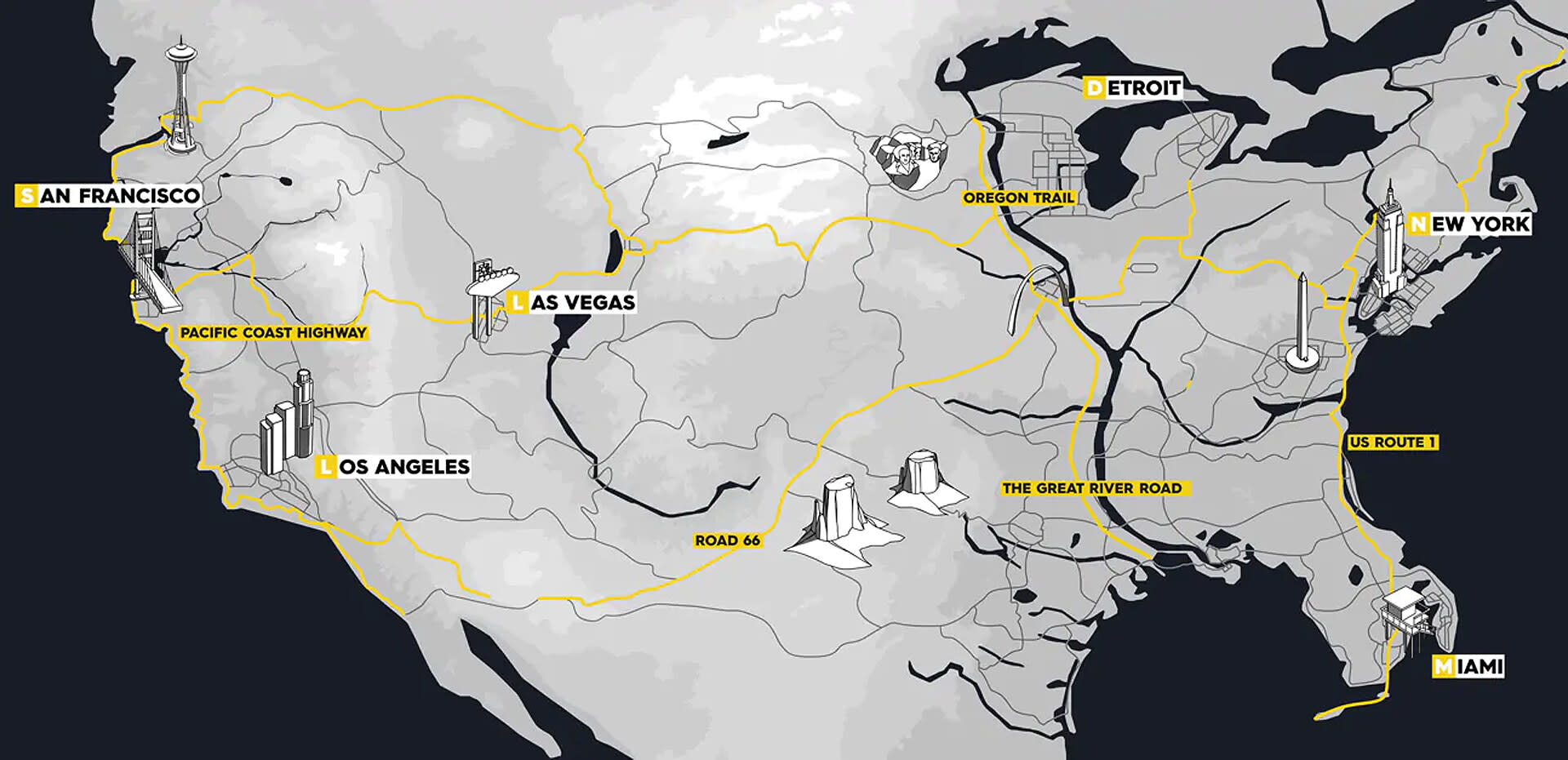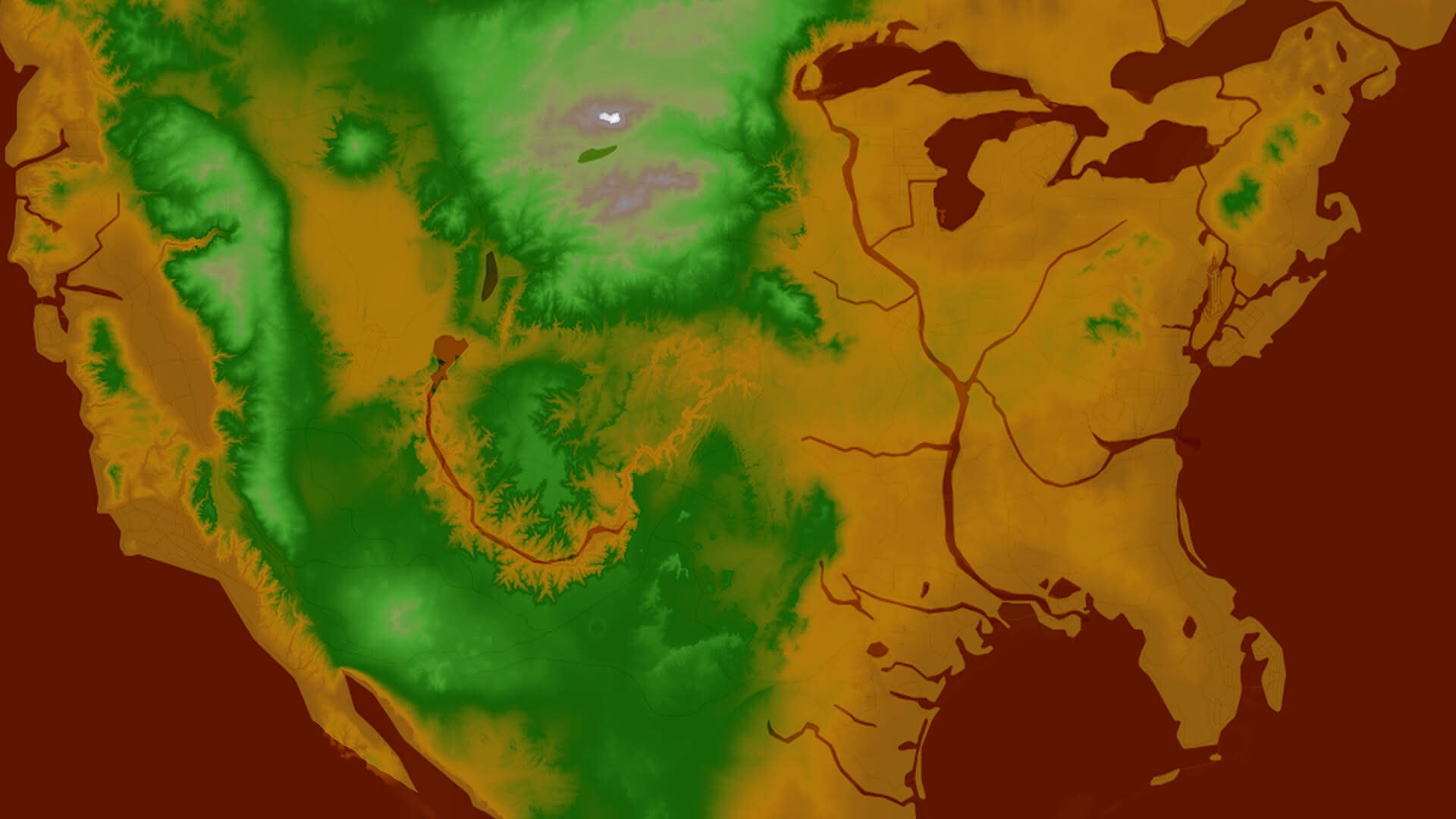How do you (re)create a condensed and virtual version of the United States for a video game? That's the job of Samantha Fardilha, who talks to us this week about her job as a terrain & world artist and the creation of ecosystems and maps for games like The Crew 2.
Samantha, 26, studied art before joining Eugen Systems as a level builder. Then, in early 2017, she joined the Ubisoft Ivory Tower team in Lyon. She works as a terrain & world artist, notably on the game The Crew 2.
I like: I have a passion for art history, and I would like to resume my studies on the subject.
I don’t like: Remote working, I need to have my colleagues around me, I miss it a lot!
CAN YOU TELL US ABOUT THE PATH YOU FOLLOWED BEFORE ENTERING THE VIDEO GAME INDUSTRY?
SAMANTHA FARDILHA - Since I was very young, I knew that I wanted to work in an artistic environment, because these are jobs that are out of the ordinary for me. I did a literary baccalaureate, then I joined the LISAA art school, which had many courses, from architecture to design, by way of fashion and video games. I was going to study fashion, but I finally chose to study video games and to take the 2D track, because I think I didn't have the level for the 3D track, but also because I wanted to do character design. In the end, I learned a lot, even more than I expected on many levels and, paradoxically, I made a 3D portfolio for my graduation.

YOU EXPLAINED THAT YOU WANTED TO JOIN AN ARTISTIC ENVIRONMENT. IN WHAT WAY, IN YOUR VIEW, ARE VIDEO GAMES AN ART IN THEIR OWN RIGHT?
S. F. - First of all, I must say that I have a very personal point of view on art that not everyone shares. In my opinion, art does not necessarily come from craftsmanship alone, but from creation. No matter what form it takes, if you create with your mind, it is an artistic action. And video games are an art form in their own right: a game designer, for example, must come up with ideas to entertain, to innovate. A 3D artist creates sculpture, virtual one, but it remains a sculpture. A narrative designer writes a script. And although I myself find it difficult to accept that I am an artist, I participate in the creation of something that is art.
HOW DID YOU COME TO WORK ON THE TOPOGRAPHY OF VIDEO GAME MAPS AND HOW IS THIS WORK REFLECTED IN A GAME?
S. F. - Eugen Systems noticed me thanks to my portfolio, and I joined the company as an intern and then as a full-time level builder, which is a mix between level design and level art. I was working on strategy game maps on a macro scale, to place the ecosystems, and on a micro scale, with the design of the defined areas. This work implies, upstream, a whole topological work which was taken on by the artistic director, which I started to work too, because I had taught myself how to use the software World Machine. I was really able to perfect its use in a video game.
And then, three years ago, I joined Ubisoft in Lyon, at Ivory Tower. They were looking for, I think, someone who could work on terrain and who had a handle on World Machine. This was the time of the production run on The Crew 2, where the map is essential. That's how I left Paris for Lyon to join the World Foundation team at Ivory Tower.
IN CONCRETE TERMS, WHAT ARE YOUR WORK SOURCES? WHERE DO YOU GET THE INFORMATION YOU NEED TO DO THIS?
S. F. - There are several ways to work on a terrain, depending on the project. There is the from-scratch creation, where you create an entire fictitious map to place mountains, seas, and rivers according to the requests of the creative team. It's creating geology from scratch, and World Machine allows you to keep logical geology rules, even if you decide to recreate Middle Earth with Mordor in the background.
And on the other hand, there are maps intended to represent a part of the real world. We will then rely on existing data, especially from satellites. We can retrieve images from Google Maps, Air France data or Nasa coordinate points to obtain height information and create what we call “heightmaps”. These maps let you take into account the differences, and to export it in different formats.
ONE OF YOUR FIRST DUTIES AT UBISOFT WAS TO REWORK THE MAP OF THE UNITED STATES FOR THE CREW 2, BUT ON A DIFFERENT SCALE. HOW DID THE RECREATION GO?
S. F. - If you take an image and reduce it in size in Photoshop, you will have less detail. For a map like The Crew 2 one, the principle is somewhat similar. If you take a satellite map in its initial size, you will have all the information, but if you reduce it, some areas will not appear anymore. On this game, rather than reducing the map, we decided to select areas that interest us. This lets us, while having a smaller map, stay really true to the areas and places that we keep. On a mountain range, we will take only a part, but a detailed part that, at the scale of the map, appears large. For this reproduction of the United States, the key areas of the game were chosen in advance with the artistic team. For example, the Grand Canyon is very large, so we had to choose the most interesting and significant part. I then go and get the corresponding information and lay the foundations of the map and add the layers of elements.
HOW DOES COLLABORATION WORK IN YOUR TEAM?
S.F. - In the World Foundation team, everyone has a specialty: there are vegetation artists, rock artists and terrain artists. We work together on the distribution of ecosystems, and they will work on the details of the settings. Typically, the vegetation artists will research with the concept artists using reference materials, such as documentaries on vegetation in the United States. They will then determine what vegetation they want to keep and where they will place it: for example, wetlands in Florida. Once I have this information, I will create “templates” to outline these areas on the map and to distribute the elements according to the chosen logic.

YOUR JOB IS CHANGING DRASTICALLY. WHY?
S. F. - Currently, the work that is done is very time consuming, especially because it is done by hand on gigantic maps. But we are entering an era where everything is becoming procedural, i.e., we are using techniques that allow us to place objects automatically and according to certain sequences of predefined logic. The use of procedurals depends on the production, and especially in our case because we need to keep control over many elements, but it is a technology that we must move towards, because it represents a major time saver in our work at different levels.
That's why, in addition to World Machine, I work with Houdini, reference software on procedural generation and which, as its name indicates, is a bit magical. Its possibilities are numerous, and thanks to the rules that can be defined, we will be able, for example, to automatically place barriers along an area, adapting it to the terrain. This saves an enormous amount of time.
WHAT CHALLENGES WILL THIS REPRESENT FOR YOU IN THE MONTHS AND YEARS TO COME?
S. F. - I think that my profession, as we know it now, is doomed to disappear. If you're working on realistic maps like The Crew 2, there's always some hand-crafted work to ensure the fidelity of the rendering. But in many games where we start from scratch, procedural generation will be more and more significant and facilitate the systemic creation of maps, which can be renewed and evolved during the life of a game. That's why the jobs of tech artist and tools artists are the ones we're moving towards. They will manage, in collaboration with artists, the procedural creation of the worlds. We'll all have to get our hands dirty!